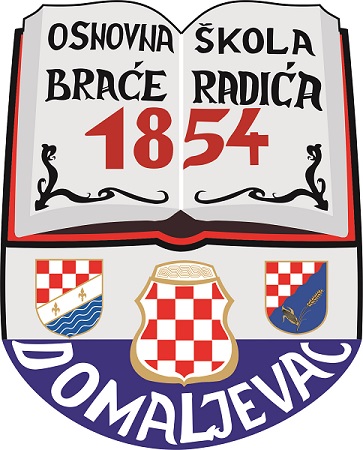Why Do My Veins Pain: Recognizing the Causes and also Seeking Alleviation
Blood vessel tonerin cofepris discomfort can be an uncomfortable and concerning experience. Whether it’s a boring pain or a sharp feeling, understanding the reasons behind this discomfort is critical for seeking correct alleviation. In this post, we will explore the numerous causes of blood vessel pain and review prospective treatment options. Please keep in mind that while this information is based on open sources as well as general expertise, speaking with a health care expert is always suggested for a proper medical diagnosis and customized recommendations.
Understanding Capillary Discomfort
Blood vessel pain refers to any kind of pain or pain experienced in the veins, which are responsible for bring blood back to the heart. This discomfort can manifest in various methods, including throbbing, aching, or a sensation of pressure in the damaged location. While capillary pain can occur anywhere in the body, it is most generally really felt in the legs, where the capillaries are under boosted stress as a result of standing or walking.
It is vital to distinguish between various types of vein discomfort. Varicose capillaries, for example, are enlarged and twisted blood vessels that usually create pain as well as pain. On the various other hand, deep vein apoplexy (DVT) is a possibly major condition identified by the formation of embolism in deep veins, causing swelling and also pain. These are just a couple of instances, and also there are a number of other problems that can bring about vein pain.
The complying with sections will explore some typical root causes of capillary pain and offer understandings right into prospective therapy options:
- 1. Varicose Veins and Crawler Veins
- 2. Deep Capillary Thrombosis (DVT)
- 3. Venous Deficiency
- 4. Phlebitis
- 5. Blood Clots
1. Varicose Veins and also Crawler Veins
Varicose blood vessels and also crawler veins are common conditions that can create blood vessel discomfort. Varicose capillaries are swollen and twisted capillaries that are come attivare money amulet often noticeable under the skin. Spider blood vessels, on the other hand, are smaller sized and also look like a spider’s internet. Both conditions take place when the valves inside the veins damage or become harmed, creating blood to pool and also capillaries to expand.
Therapy alternatives for varicose veins and crawler capillaries vary from way of living changes, such as routine workout as well as elevation of the legs, to clinical interventions, including sclerotherapy and laser therapy. Your doctor can lead you in selecting the most suitable choice based upon the seriousness of your problem.
2. Deep Capillary Thrombosis (DVT)
Deep blood vessel apoplexy (DVT) happens when an embolism kinds in a deep blood vessel, generally in the legs. This problem can be life-threatening if the clot breaks loose and also takes a trip to the lungs, triggering a lung embolism. Blood vessel pain, swelling, and also warmth are common signs of DVT.
If you believe you might have DVT, looking for immediate clinical focus is vital. Treatment for DVT typically includes blood-thinning medications to stop the clot from growing or breaking loose. In many cases, clot-dissolving medicines or medical treatments might be necessary.
3. Venous Insufficiency
Venous deficiency occurs when the blood vessels have problem sending blood from the arm or legs back to the heart. This problem frequently brings about capillary pain, swelling, and aching legs. The underlying reasons may consist of weak capillary valves, damage to the blood vessels, or other variables that prevent correct blood flow.
Therapy alternatives for venous insufficiency concentrate on soothing symptoms as well as enhancing blood circulation. Compression stockings, way of life adjustments, and medication can assist manage discomfort and decrease swelling. In serious instances, medical procedures such as capillary ablation or capillary coronary bypass might be suggested.
4. Phlebitis
Phlebitis describes the inflammation of a blood vessel, which can trigger pain, redness, and swelling. Surface phlebitis impacts capillaries near the skin’s surface area, while deep phlebitis affects deeper capillaries. Phlebitis can take place because of various aspects, including injury, infection, or the presence of an intravenous catheter.
Treatment for phlebitis may involve pain alleviation medications, warm compresses, and elevation of the afflicted location. In many cases, antibiotics might be essential if an infection is present. It is vital to consult a health care professional for a correct medical diagnosis as well as ideal therapy plan.
5. Blood Clots
Blood clots in the veins, likewise known as thrombophlebitis, can create capillary pain as well as swelling. These embolisms can form because of a selection of variables, consisting of long term immobility, injury, or an underlying clinical problem that influences blood clot.
Therapy for embolism commonly involves drugs to thin the blood as well as stop additional clotting. In severe situations, surgical interventions might be necessary to get rid of the clot or area a filter in the capillary to stop future clots from traveling to essential organs.
Conclusion
Capillary pain can have various causes, ranging from usual problems like varicose blood vessels and spider capillaries to extra serious problems like deep vein apoplexy. It is vital to pay attention to any persistent or extreme blood vessel discomfort and also look for medical attention for an appropriate medical diagnosis and also proper treatment. Treatment options can vary based on the underlying cause, varying from way of life changes as well as self-care steps to medical treatments. By recognizing the sources of vein discomfort as well as seeking timely care, people can find relief and also enhance their overall vascular health.
